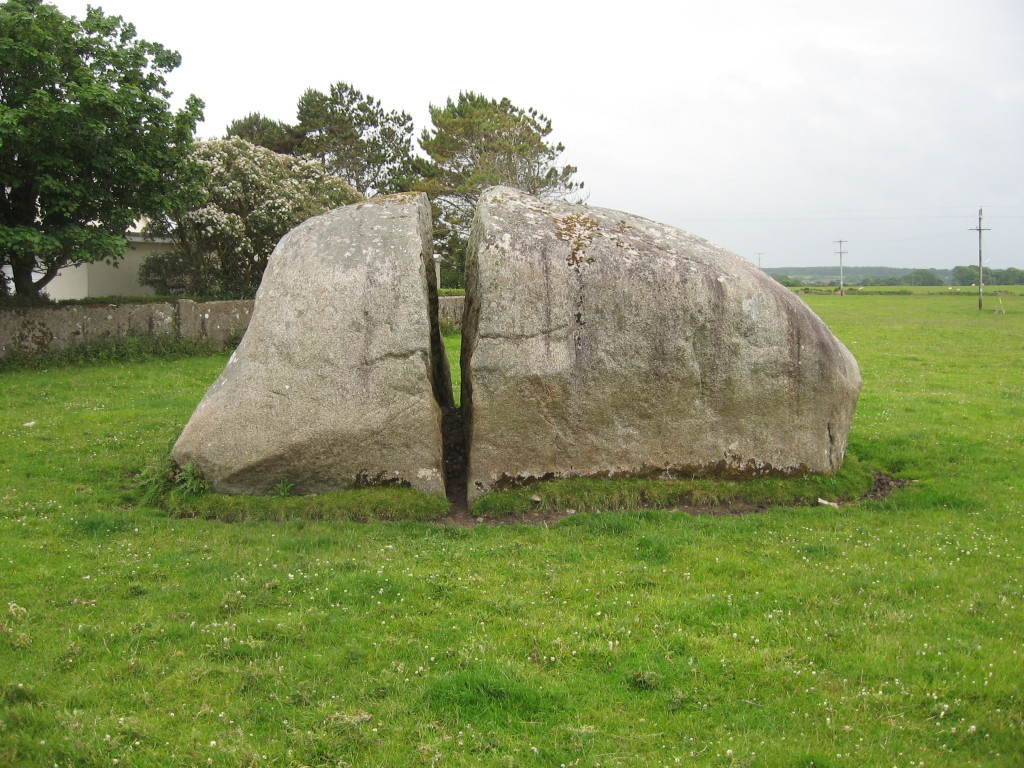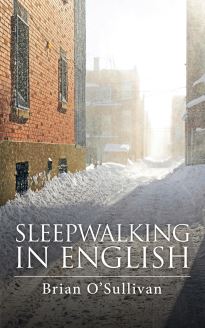
Benbulben or Binn Ghulbain in Irish (the Peak of Gulbain) is a substantial piece of rock that dominates the country north of Sligo. I was lucky enough to catch it on a clear day and had the time to sit back and stare at it. It truly is an impressive chunk of granite.
Like many dominant topographical sites in Ireland, Benbulben’s often linked to legendary or mythological characters. This was an old trick of the ancient storytellers, their way of making stories more interesting and personally relevant. By linking a tale they’d heard elsewhere to part of the local topography well known to their audience, it added impact and resonance. This is why it’s so common to find the same – or very similar – versions of the same ancient tale set in a number of different localities (sometimes with local variations added on). A nightmare for the professional folklorist attempting to establish the true origin of the narrative but fun for the local population all the same.
Benbulben is particularly associated with the Fenian Cycle tale Tóraíocht Dhiarmuida agus Gráinne (the Pursuit of Diarmuid and Grainne). The earliest surviving text with this story dates back to the 16th century but it’s pretty clear that the material contains much older elements that go back as least as far as the tenth century (and possibly before).
The Tóraíocht – as it’s more commonly known back home – is a tragic love triangle at heart. It concerns the great warrior Fionn mac Cumhaill, the princess Gráinne and the Fenian warrior Diarmuid Ua Duibhne. The story’s striking, not only because of its rich epic tragedy, but also because it’s one of the first times in Irish literature where Fionn mac Cumhaill is shown in a poor light.
The Tóraíocht relates how Fionn – now an aging man – seeks the hand of Gráinne (the daughter of king Cormac mac Airt). An unwilling participant in the deal, however, Gráinne falls in love with the handsome warrior Diarmuid during the pre-marriage feast. Slipping a sleeping potion into the wine, she places Diarmuid faoi geasa – under a magical obligation – to elope with her.
The tóraíocht – pursuit – commences in earnest then with Fionn and the Fianna chasing the couple around the country, occasionally pulling in celebrity cameos from the likes of Aengus to help them when all seems lost. After many adventures, peace is finally made with Fionn and the lovers settle in Keshcorran.
One day, years later, Fionn and the Fianna pass by and invite Diarmuid to join them on a boar hunt. Despite the warnings of his lover, he leaves with them only to be fatally wounded by the supernatural boar. Because of his own powers, Fionn has the ability to save the warrior by simply allowing him to drink water from his hands. Still smouldering from the insult of their elopement however, he refuses to do this despite the warnings of his own warriors. On two occasions, he pretends to help but allows the water to slip through his fingers. Finally, his own grandson, Oscar, threatens him and Fionn reluctantly agrees to help. By the time he returns from the well however it’s all too late and Diarmuid’s already succumbed to his wounds.
Originally, when I was writing Beara: Dark Legends – which contains a very strong Fenian component – I had intended to include Benbulben and the Tóraíocht within the storyline. In the end, though, I decided against it and now it’s just referenced briefly towards the beginning of the novel. The way I figured it, Benbulben was very much a Sligo feature. The Beara storyline is focused very much at the opposite end of the country in a place which has strong topographical features of its own.
Maybe another time.













